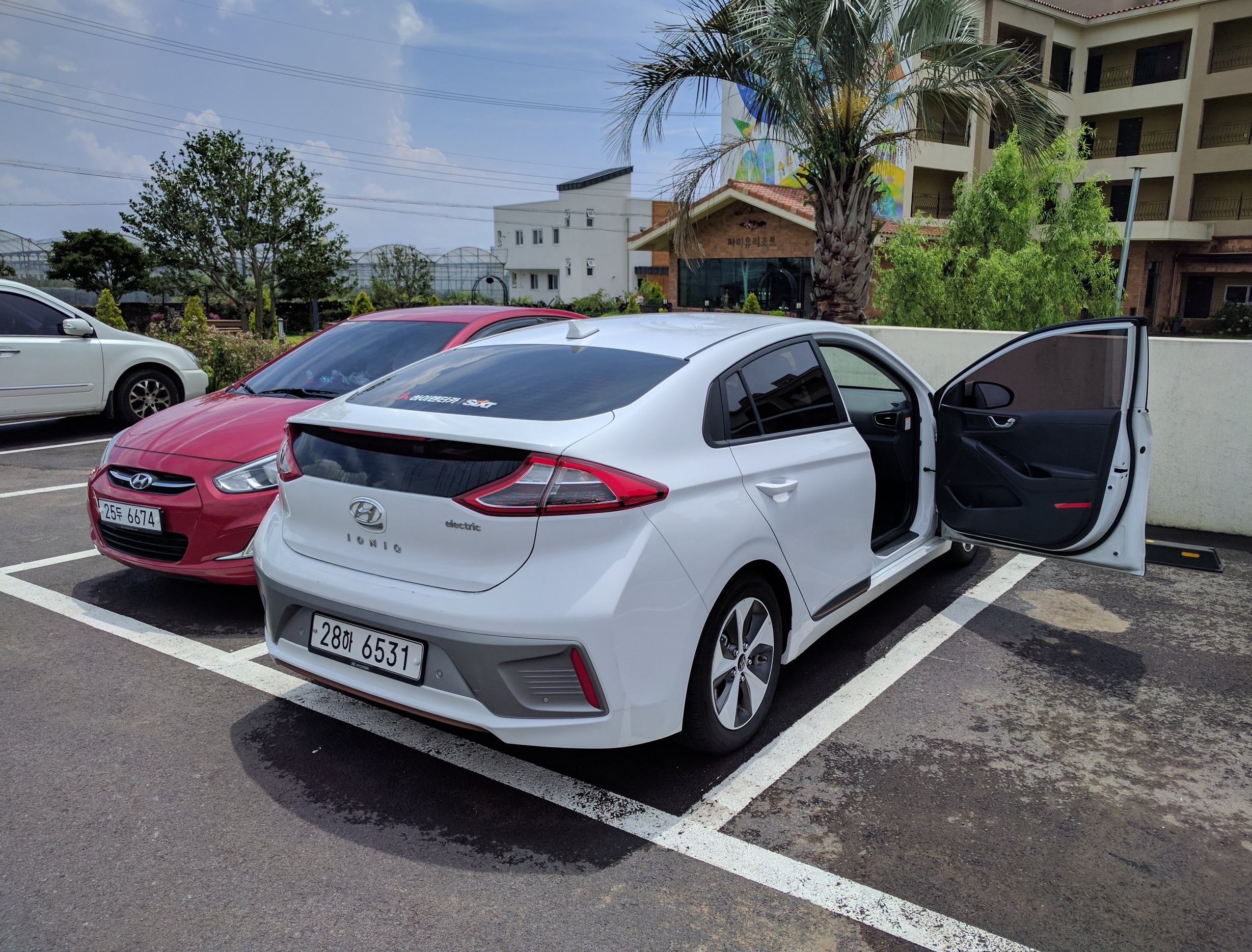2017 Hyundai IONIQ Electric Review - A Corporate Fleet Superstar?
Background
My family recently traveled to South Korea's southern island, Jeju, for a week of sights and great food. Jeju is often considered the Hawaii of Korea as a comparison for US-based readers. While researching rental cars for the trip, I discovered that Korea has for all intents identified Jeju as the testbed for its domestic auto manufacturers' as well as the country's eventual conversion to electric vehicles (EV). Proof is in the pudding as plans have 50,000 EVs driving around the island by the end of this year.
In my search for a rental car, I landed upon a great deal on a Hyundai Ioniq Electric vehicle. While I am a firm believer in electric vehicles, range anxiety lingered in my mind. Google searches on changing infrastructure on the island were unable to relieve this concern, but I decided to put my faith that Korea was investing in its charging build out as promised.
The Review
Fast forward to vehicle pickup. As a preface, the Ioniq is the third EV I have driven, the Gen 1 Leaf and BMW i3 being the others. We ran the car through a variety of situations (e.g. highway, city, mountains) during our week with the vehicle and walked away with an overall positive outlook. My father-in-law who had never driven an EV before also took a few turns behind the wheel, so I've included his perspective in the review below as well.
Range and Charging
The Ioniq has an EPA rated range of 124 miles (200km), although the vehicle computer commonly listed 210+ km after a full charge. Now Jeju is not that large an island, with a circumference of about 200km, so there was never a need to make a mid-destination charge. If we had, I have no doubt that a charger would have been available based on our experience. While I did not keep track of travel distance vs remaining range, it appeared to be fairly in-line with the air conditioning running full. The one exception was during the drive up to Hallasan mountain, where we consumed roughly 50km over a 15km climb of 1200 meters. On the drive back, I actually put 20km back into the battery - so overall a net 30km consumed over 30km.
The charging network on Jeju was as good as advertised. Using the onboard charging station locator, there were consistently at least a few Level 2 chargers, plus a number of Level 1s within 5 to 10 km of us. We ended up recharging the EV three times, twice at tourist locations and once at a supermarket. The type of charging station was different each time, some with only the CHAdeMO plug and others with a variety of plugs. We did stop once at a Level 1 station at a McDonalds, but it seemed to be offline. Charging time for the Level 2 was quick, about 20 minutes for a half charge (100km), meaning a rate of about 5km per minute.
Comfort and Cargo Space
Since we were on vacation, luggage space was an initial concern, but the trunk was sufficient for our 3 medium sized suitcases plus 2 bags. Research indicated the Ioniq actually has the largest cargo room of any EV other than a Tesla. Interior space was also more than sufficient for our four adults and one child. My father-in-law is a tall guy at 6 foot 3 inches and never mentioned a space issue in either the passenger or driver position.
Driving Experience
I am rating the driving experience as a definite improvement over the Gen 1 Leaf and similar to the BMW i3. The acceleration of the i3 is superior, but the better handling of the Ioniq, especially on the mountain turns is noticeable. That said, the Ioniq's acceleration is still at a different level from any similarly priced ICE vehicle (I did give it a test with a peddle to the floor off a red light), just don't expect to be pressed back into your seat. For the cornering, the tires were a limiting constraint on my testing since they started to screech well before any handling issue with the vehicle itself (got to love that low center of gravity).
There was only one complaint that both my father-in-law and I shared. The view from the rearview mirror is significantly limited due to the small back window and location of the spoiler. I've included a picture of the rear view to capture this item. We eventually adjusted by relying more on the side mirrors than the rear view for which we were both accustomed to.
The Next Fleet Vehicle?
With the low starter price of $29,500 for the base model, the Ioniq is very competitively priced and there is talk of the vehicle being the cream of the EV crop for business fleets. After driving the vehicle I have to agree. We also know the total cost of ownership is now largely in favor of EVs over hybrids and conventional ICE vehicles, although there is the recent resale issue due to the technology leaps each new Gen of EVs is currently making (with the exception of Teslas due to the over-the-air updates).
For municipal and corporate fleets working within a limited zone, I see this vehicle being a slightly better option than the Leaf or Bolt due to the post-incentive price tag. The Leaf is more expensive with lesser range while the Bolt is significantly more experience and has a range larger than needed for most fleet operations (never thought I say that).
Of course, the Tesla Model 3 may shake up this conclusion once Tesla runs through its 450,000+ reservation list, especially for those corporations looking to attract top talent.

